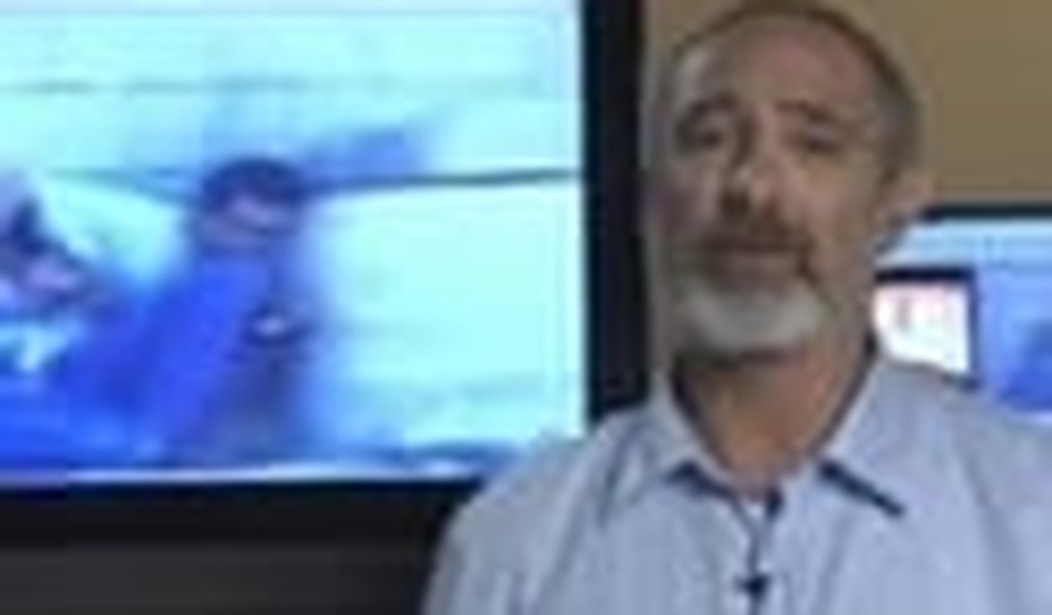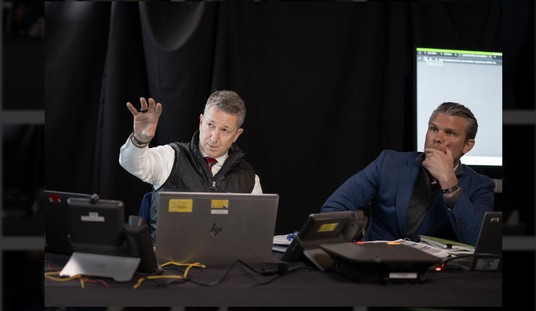The French court of appeals, presided over by the redoubtable Madame Laurence Trébucq, has reversed the decision of a lower court — the (in)famous “Chambre 17” that specializes in verbal crimes had found Philippe Karsenty guilty of defaming France2 after Karsenty, in a 2004 article, claimed (as have many familiar with the dossier), that the scene was staged. The unexpected reversal by the court of appeals represents the first major European breach of the blanket of silence that has greeted any effort of critics to call into question France2’s presentation of the Al Dura footage as actual news.
The Muhammad al Durah affair represents one of the most revealing and distressing cases in the mainstream media’s coverage of the Arab-Israeli conflict. On September 30, 2000, France2’s Middle East correspondent, Charles Enderlin, ran footage of what looked like a boy and his father, together hiding behind a barrel, “the target of fire coming from the Israeli position.” According to this report, the boy was killed and the father badly wounded. The footage went around the world instantly, provoking outrage and violence against both Israel and Jewish communities in the Arab world and in Europe.
France2 compounded these violations of journalistic ethics by attempting to block any criticism. Ridiculing the proponents of the “staged hypothesis” as conspiracy theorists on the order of 9-11 truthers or holocaust deniers, France2 sued independent French citizens who had the nerve to criticize them for their journalistic incompetence.
In doing so, the media giant has used a law from 1881, created to protect people from defamation by the media, to protect the media from any oversight. As Karsenty noted in a recent speech, “The Al Dura lie is an assault on our ability to think, to criticize, to evaluate, and, finally, to reject information — especially the right to reject information on which we base our most cherished assumptions.”
France2’s legal maneuver backfired when they were called to show the court the raw footage of their Palestinian cameraman, Talal abu Rahmah, whose camera work and testimony lie at the heart of the accusation against the Israeli army. They found themselves forced to cut the most embarrassing scenes before showing the footage to the court, and to explain to the court why the remaining footage had so many suspicious scenes.
Philippe Karsenty commented:
It is ironic that I, a private individual, had to lecture one of France’s most influential TV stations in order to demonstrate that a child cannot move, lift his head, arm and leg, stare at the camera and still be considered ‘dead’ a good 10 seconds after the newscaster tells us… ‘the child is dead.’ One need only look at France 2’s own footage to realize that the ‘death’ scene was faked.
While we will not have the court’s written decision until tomorrow, the fact that it comes after a series of contentious hearings before the appeals court suggests the following:
- In order to reverse the decision of the lower court, the appeals court needed to see significant evidence that, although Karsenty’s article definitely struck at the “honor and consideration” of Enderlin and France2, he had justification (if not proof) for his criticism.
- The viewing of the rushes (which, presumably, the judges got to view again in the privacy of their chambers) played a significant role in the process of convincing the judges to overturn the earlier decision.
- French justice’s wheels may turn slowly, but they do turn. One can still count on an independent judiciary in some corners of the French court system.
- This is not only a victory for the French justice system, but also for the cause of freedom of speech in France and Europe, as Karsenty commented:
Our victory today was a victory for freedom – the freedom to think and to speak one’s mind; the freedom to question what one is told; and the freedom to disbelieve the solemn pronouncements of others when the individual concludes that his reasoning is correct and that the state and the state-run media – and all of the institutions they represent – are wrong.
Sources close to France2 have suggested they may take this appeal one level higher to the “cour de cassation,” the highest court of appeal in France. Karsenty responded by noting that, at that level, the issues are purely technical, not substantive. In a sense, France2 and Enderlin are caught between the rock of facing their disastrous errors in judgment, increasingly obvious to everyone, and the hard place of making even more errors of judgment in the pursuit of the face-saving fiction that they have done/can do no wrong.
Now that the court has thrown out France2’s effort to intimidate Karsenty, perhaps an increasing number of intellectuals and media critics — and maybe even self-critical members within the media — will begin to look to cleaning their Augean Stables.
As a contribution to that janitorial task, I think it would be worthwhile for current MSM journalists to pay attention to a phenomenon I called Pallywood, after seeing Talal’s rushes for the first time in 2003. This phenomenon includes, but is not limited to, Palestinian protestors and ambulance drivers staging scenes that Palestinian cameramen film. They pass this staged footage on to unsuspecting Western journalists who, in turn, present it to the public as actual news. I have posted a 14 minute video (above) examining France2’s use of Talal’s rushes in the court case, highlighting their near-constitutional incapacity to see how Talal has manipulated them. For a view of the materials this video analysis is based on, you can see (the bowdlerized version of) Talal’s rushes and the France2 video presented to the court here.
In the asymmetrical warfare of global Jihad against the West, the “weak” side treats the media of the “strong” side as a theater of war, and no single case shows the Western journalism’s vulnerability to this kind of manipulation better than the Al Durah affair. Nothing illustrates the dysfunctions of our media more than their pervasive refusal to reconsider this case, despite the amount of damage it has produced. Nothing endangers Western democracies more than mis-information, and news broadcasts, products of a free and honest media, are the eyes and ears of the civil polity. No creature, no matter how powerful, can survive if its senses betray it, especially in a war zone.
Today’s decision represents a major victory not only for Philippe Karsenty but for those who have tenaciously resisted this media catastrophe. It also represents a victory for the French, the Europeans, and all Westerners in the ongoing battle with forces that despise both a free and equitable media and society.
UPDATE: You can read an English-language translation of the judge’s ruling here.









Join the conversation as a VIP Member